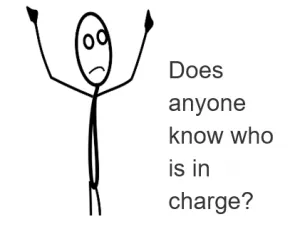
MHC works with agencies to support the design and implementation of effective governance and management frameworks. If you need help with this, or any other related service, please get in touch.
Strong governance is not just an invisible glue but a steel rod that provides essential stability, especially in times of crisis. Investing in effective governance systems is the best insurance policy for tackling future challenges, as exemplified by the rapid and effective COVID-19 response enabled by robust governance structures.
At the outset of establishing a new branch/division, a new program or project your first priority is to establish a governance and management framework. You can do this by drawing on relevant items in the article below.
Also remember good governance is not a ‘set and forget’ exercise, you need to periodically review whether you need to adjust it.
“It has been made devastatingly clear that the best defence against health emergencies is a strong health system. A strong health system is a resilient health system.”
WHO Director-General, 9 July 2020
I want to extend my sincere admiration for those who have been working on the COVID-19 pandemic response and recovery planning. The grit, focus, selflessness and team spirit of all involved has been amazing to watch.
Success in these circumstances relies, of course, on the competency and commitment of individuals – but that alone is not enough, as we’ve seen this year. Good people need to be supported by strong and resilient systems, founded on good governance.
I have previously written about governance being the bedrock of implementation success. Extending on this idea, I suggest that strong governance in the good times is an invisible glue – but in challenging times, becomes a steel rod providing essential stability. I strongly believe that investing in effective governance is the best insurance policy to help tackle the next crisis that will come along.
Some people think good governance is hard to define. Like good art; they say: “I know it when I see it”.
I disagree. Governance principles and practices can be designed, embedded into practice and learnt.
A few definitions:
You can see there are core elements of governance irrespective of what sector you work in. In contrast, it is clear to people when governance is lacking, though they might not necessarily see if it as a failure in ‘governance’.
Recognise the following?


I’m sure you’ve all had that déjà vu moment, when people re-prosecute the same decision again and again. I once heard the same committee make the same decision three times! Or – when things fall through the cracks because it was not clear who was responsible for them. Or – when performance is continually below average, but nothing happens about it because no-one is monitoring performance and holding people to account.
Below are elements which I believe characterise ‘good governance’. Whether you have oversight of an organisation or are responsible for running a program within an organisation, this is a handy checklist of considerations.
An effective corporate governance framework will consider the following:
Other elements that can be added to that for public sector entities are:
Good governance structures are not ‘set and forget’. They need to be reviewed regularly.
Banking Royal Commissioner Kenneth Hayne recommends that entities should, as often as reasonably possible, take proper steps to:
Incorporating these elements will act as an invisible glue in good times, helping an organisation or program run smoothly. But it is in times of crisis that good governance emerges as truly essential – the steel rod underpinning all you do.
In a crisis, good governance safeguards against panic and chaos, and prevents reinvention of the wheel.
In a crisis, an organisation with good governance structures can rapidly make time-critical decisions and ensure their response is both fast, and effective.
When mistakes are made, good governance means they are investigated through agreed processes and lessons are quickly learnt.
Finally, good governance means that crisis planning is up to date and can be acted upon when needed.
A timely example is how rapidly the existing governance and public health structures across NSW Health were able to be harnessed to deal with COVID-19.
© 2015-2025 MH Consulting Group (MHC) | Disclaimer | Privacy
